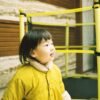![SEN School Photography Empowering Students with SEN Through Inclusive School Photography As I reflect on the role of school photography, I recognise how vital it can be for students with Special Educational Needs (SEN). Photography offers a powerful form of expression, helping students communicate thoughts and feelings that words may not always fully capture. It provides a […]](https://schoolshots.co.uk/wp-content/uploads/2025/06/vecteezy_hand-drawn-inclusion-and-diversity-colorful-gradations_.jpg)
Empowering Students with SEN Through Inclusive School Photography
As I reflect on the role of school photography, I recognise how vital it can be for students with Special Educational Needs (SEN). Photography offers a powerful form of expression, helping students communicate thoughts and feelings that words may not always fully capture. It provides a platform to highlight their perspectives and experiences, fostering a sense of belonging and validation within the school community.
Through the lens of a camera, students with SEN can share their stories, celebrate their achievements, and connect meaningfully with peers. School photography can also play a valuable role in supporting self-esteem. When students see their images displayed in school exhibitions or yearbooks, it reinforces their identity and place within the school.
This visibility can be empowering, helping students feel recognised and appreciated for who they are. In a world where some may feel overlooked or misunderstood, photography offers a constructive and creative way to celebrate individuality—making it a meaningful part of the wider educational experience.
Key Takeaways
-
School photography supports self-expression, communication, and creativity for students with SEN.
-
Understanding and adapting to students’ individual needs helps create a comfortable and inclusive environment.
-
A calm, sensory-considerate setting and clear communication foster participation and focus.
-
Photography can help develop social and communication skills through collaborative and expressive activities.
-
Inclusive techniques and adapted equipment help ensure all students are fully supported and engaged.
Understanding the Unique Needs of Students with SEN in Photography
Understanding the diverse needs of students with SEN is essential when planning or delivering school photography sessions. These needs may be related to physical disabilities, learning differences, sensory sensitivities, or emotional and social challenges. For example, some students may require extra time to process instructions or benefit from visual aids that support understanding.
Recognising these factors enables me to adapt my approach and ensure that every student feels safe, comfortable, and supported throughout the photography process. Sensory sensitivities, such as discomfort with bright lights or loud environments, are also common. Creating a calm, quiet space with minimal sensory distractions allows students to feel at ease and engage more fully.
By taking time to understand and prepare for these needs, I can help each student enjoy the photography experience and explore their creativity confidently.
Tips for Creating a Comfortable and Inclusive Photography Environment
Creating an inclusive environment for students with SEN involves thoughtful planning and flexibility. One key strategy is to establish clear routines and expectations before each session. This structure can help students feel secure and reduce any anxiety about unfamiliar situations.
Visual schedules, simple written instructions, or step-by-step photo guides can be especially helpful. They allow students to anticipate each part of the session and understand what’s expected.
Pairing students for collaborative tasks can also be valuable. Working with supportive peers helps build confidence, teamwork, and social interaction. This not only enhances the learning experience but also creates a positive, respectful atmosphere where everyone’s contribution is valued.
How Photography Can Support Communication and Social Skills
Photography is an effective way to support the development of communication and social skills among students with SEN. Through photography projects, students often become more confident in expressing their ideas and emotions. Discussing their photos with peers or staff creates natural opportunities to practise language and conversational skills.
Collaborative photography activities also encourage teamwork and empathy. Students may plan shots together, give each other feedback, or share their work in group discussions. These interactions help develop active listening, turn-taking, and cooperation—skills that can extend into other areas of school and life.
By providing space for creative expression, photography becomes a medium through which students can build both confidence and connections.
Adapting Techniques and Equipment to Support Participation
Ensuring full participation means adapting photography techniques and tools to meet the varied needs of students with SEN. This might involve using lightweight cameras or tablets that are easier to handle, or tripods and grips to assist students with mobility or coordination difficulties.
Simplifying technical concepts is also key. Rather than overwhelming students with advanced terminology, I focus on the basics—framing, lighting, and composition—using visual examples and hands-on guidance. Demonstrations and repetition help make learning accessible and enjoyable.
By tailoring both equipment and teaching style, I can empower students to take ownership of their photography experience.
Celebrating Progress and Achievement Through Photography
Photography is a wonderful tool for celebrating the achievements of students with SEN. Whether it’s capturing participation in a school event, completing a personal project, or simply exploring a new skill, these moments represent real progress.
Displaying their work in school newsletters, galleries or classroom walls helps students feel proud of their contributions and encourages a culture of recognition and inclusion. It also promotes visibility and inspires peers, families, and staff to appreciate the creativity and growth shown through each image.
This celebration of achievement, large or small, helps build a more inclusive and appreciative school environment.
Collaborating with SEN Teachers and Support Staff
Working closely with SEN teachers and support staff is crucial for delivering meaningful and respectful photography sessions. These professionals bring deep understanding of the students’ specific needs, strengths, and learning preferences.
By sharing ideas and planning together, we can design projects that are aligned with educational goals and individual capabilities. Regular communication ensures that support strategies are in place—from managing transitions to accommodating sensory needs.
This collaboration not only enhances the experience for students but also strengthens the school’s inclusive ethos.
Showcasing the Perspectives and Creativity of Students with SEN
Students with SEN often bring unique insights and creativity to their photography. By encouraging them to choose themes that matter to them—nature, daily routines, abstract ideas—they are able to tell stories in authentic and powerful ways.
When these photographs are shared through exhibitions, school websites, or printed displays, their voices are heard and valued. This strengthens self-expression and also broadens the school community’s understanding of different perspectives and experiences.
Celebrating this creativity publicly helps shift the narrative around disability and difference—from limitation to contribution.
Overcoming Barriers to SEN Photography
While the benefits of SEN-inclusive photography are clear, there can be challenges. Limited access to suitable equipment or lack of time within the school timetable can make it harder to run sessions consistently.
To address this, I explore creative solutions—borrowing or sourcing donated equipment, or integrating photography into existing curriculum areas like art, English, or PSHE. Embedding it into the timetable makes it more accessible and sustainable.
Small adjustments can make a big difference in enabling all students to participate and benefit.
Empowering Students Through Photography Workshops and Projects
Workshops and longer-term photography projects give students the opportunity to explore ideas in depth. These sessions offer structure and support while encouraging independence.
Projects can include personal photo diaries, themed collections, or collaborative class exhibitions. Through these activities, students develop technical skills and creative thinking, as well as a stronger sense of ownership and pride.
Workshops also foster a spirit of community, where sharing and feedback are encouraged, and all contributions are valued.
The Wider Impact on the School Community
SEN school photography doesn’t just benefit the students directly involved—it also contributes to a more inclusive and empathetic school culture.
By sharing their work, students with SEN are represented in ways that promote respect and understanding. Families, staff, and peers gain deeper insights into their strengths and stories.
Public displays or social media sharing (with appropriate consent) can open up broader conversations about inclusion, visibility, and the power of creativity. These images help challenge assumptions and build connections both within and beyond the school gates.
FAQs
What is SEN School Photography?
SEN School Photography is an inclusive approach to capturing images of students with Special Educational Needs in educational settings. It aims to celebrate their personalities and achievements while considering their individual needs and preferences.
What makes SEN photography different from traditional school photography?
It involves adapting the environment, approach, and equipment to create a calm, accessible experience. Photographers work closely with staff to understand how to support each student’s participation and comfort.
What are the benefits of SEN School Photography?
It supports creativity, communication, and confidence. It also helps foster an inclusive culture and provides valuable documentation of each student’s progress and personality.
How can schools prepare for SEN photography sessions?
Schools can support sessions by sharing relevant information with the photographer in advance, creating a calm environment, and ensuring familiar staff are present. Clear communication with families is also key.
What should parents and guardians know?
Parents and carers should be informed ahead of any photography sessions and have the opportunity to give consent. They may also be invited to share insights into how best to support their child’s comfort and participation.







